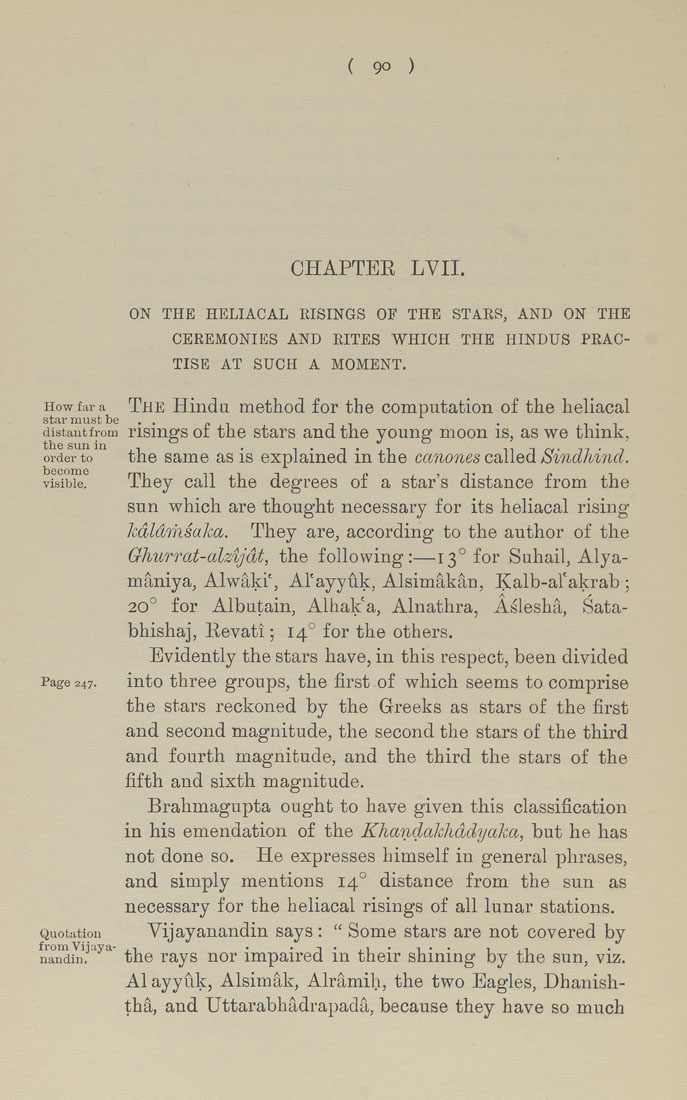( 90 )
CHAPTER LVII.
ON THE HELIACAL RISINGS OF THE STARS, AND ON THE
CEREMONIES AND RITES WHICH THE HINDUS PRAC¬
TISE AT SUCH A MOMENT.
How far a TiiE Hiudu mcthod for the computation of the heliacal
distantfrom risiugs of the stars and the young moon is, as we think,
order to the samc as is explained in the cctnones called Sindhind.
visible. They call the degrees of a star's distance from the
sun which are thought necessary for its heliacal rising
kdldmsaka. They are, according to the author of the
Ghitrrctt-alzijdt, the following:—13° for Suhail, Alya-
maniya, Alwaki', Arayyuk, Alsimakan, Kalb-arakrab ;
20° for Albutain, Alhak'a, Alnathra, Aslesha, Sata¬
bhishaj, Revatl; 14° for the others.
Evidently the stars have, in this respect, been divided
Page 247. into three groups, the first of which seems to comprise
the stars reckoned by the Greeks as stars of the first
and second magnitude, the second the stars of the third
and fourth magnitude, and the third the stars of the
fifth and sixth magnitude.
Brahmagupta ought to have given this classification
in his emendation of the Khandctkhddyaka, but he has
not done so. He expresses himself in general phrases,
and simply mentions 14° distance from the sun as
necessary for the heliacal risings of all lunar stations.
Quotation Vijayanandin says : " Some stars are not covered by
nandin?''^'' the rays nor impaired in their shining by the sun, viz.
Alayyuk, Alsimak, Alramih, the two Eagles, Dhanish¬
tha, and Uttarabhadrapada, because they have so much
|








